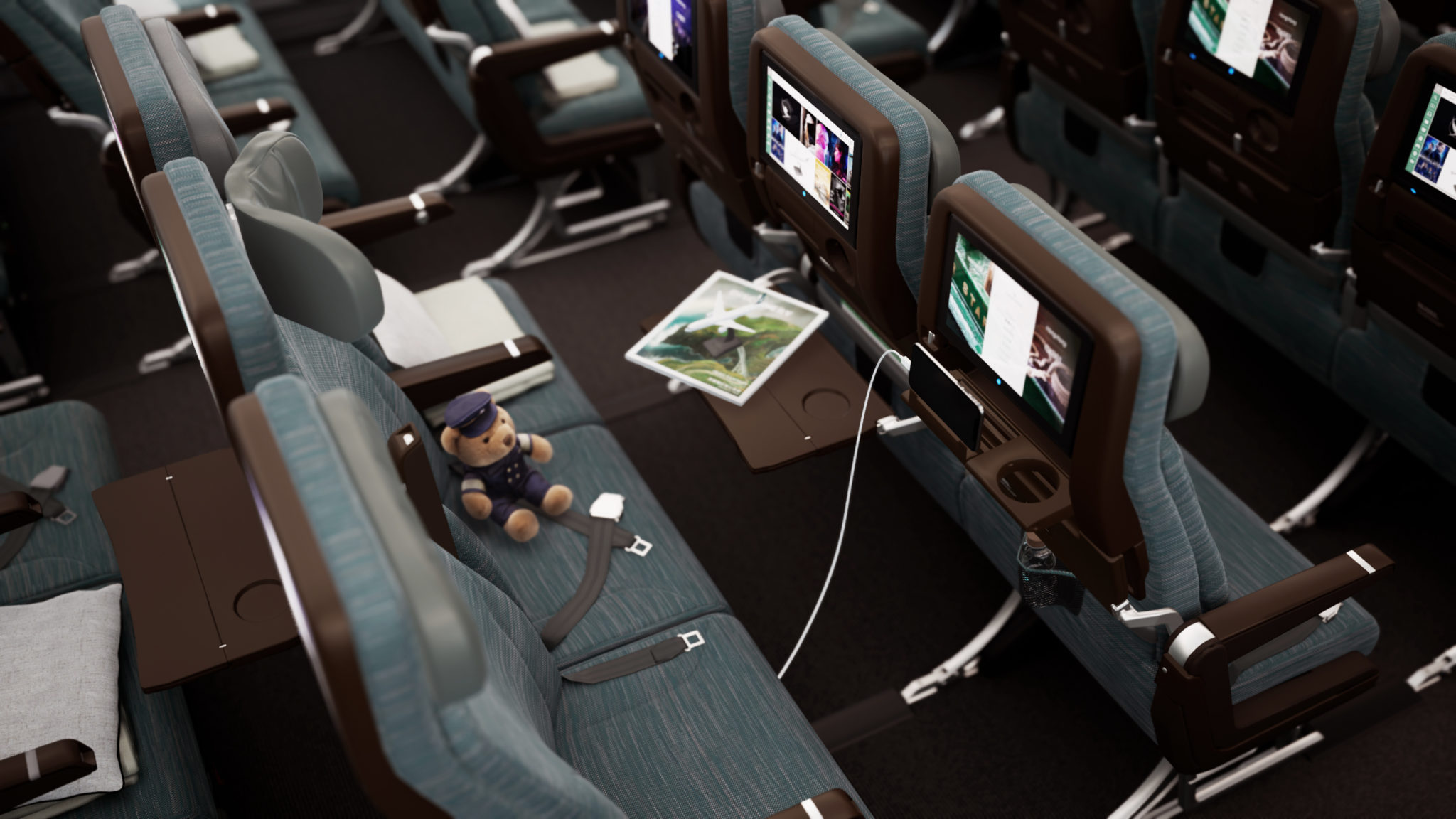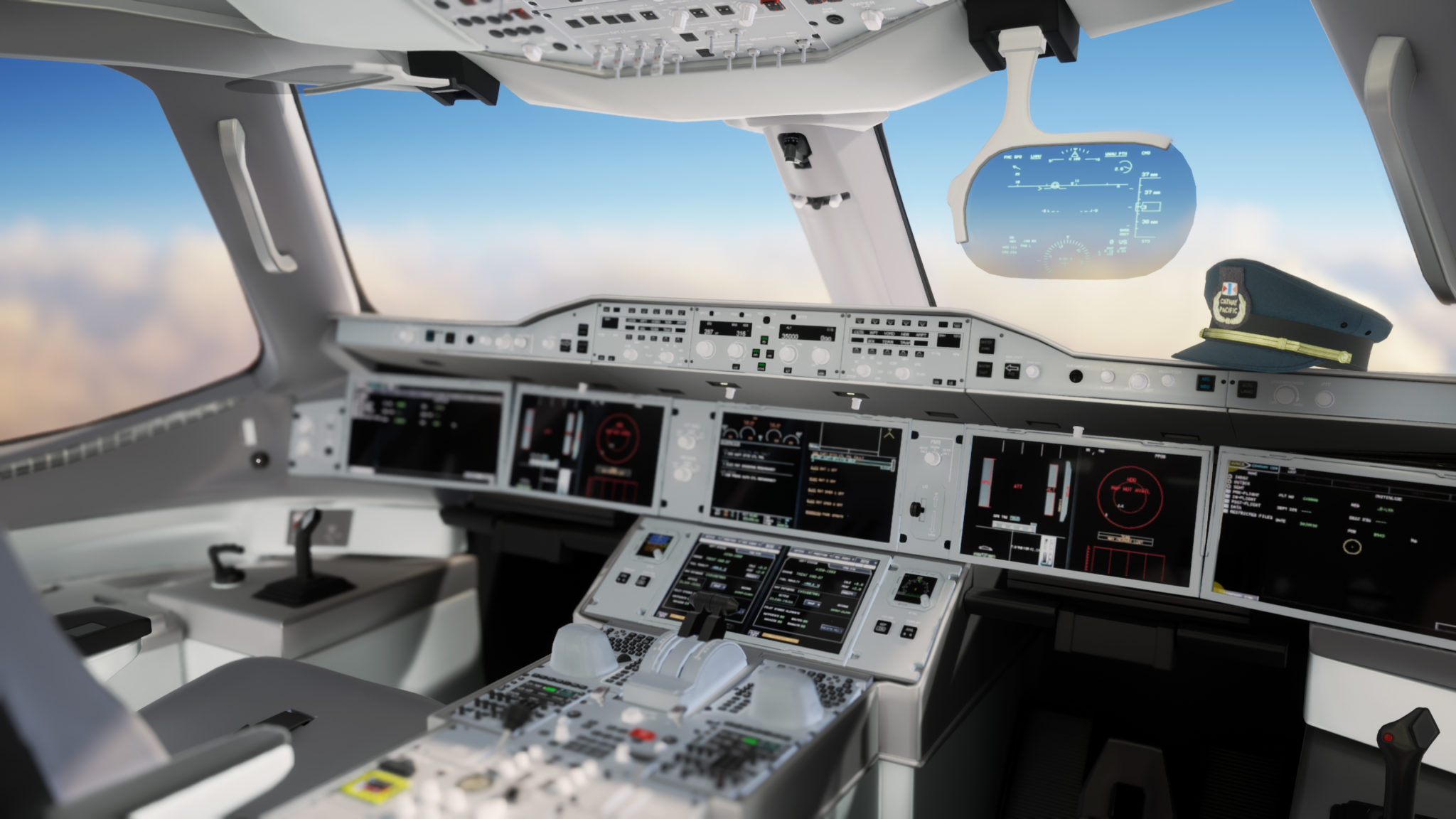 It’s easy – and even healthy – to be a bit skeptical about cutting-edge technology applications in aviation. Virtual Reality (VR) is an area that still seems to teeter between curiosity and doubt, but those who know the technology well feel it has legs to last beyond the hype, especially for applications that could benefit in the design, manufacturing and marketing process of cabin interiors.
It’s easy – and even healthy – to be a bit skeptical about cutting-edge technology applications in aviation. Virtual Reality (VR) is an area that still seems to teeter between curiosity and doubt, but those who know the technology well feel it has legs to last beyond the hype, especially for applications that could benefit in the design, manufacturing and marketing process of cabin interiors.
While VR as inflight entertainment could provide an escape from crowded conditions in the cabin – and may appeal to some – there are still questions over how many passengers would be willing to put on goggles in-flight, and if they’ll feel comfortable in a VR world. It’s also hard to imagine that airlines could afford to supply these expensive devices to passengers outside of first and business class where, arguably, no escape is necessary.
But looking at VR as only an entertainment tool is perhaps short-sighted.
As Greg Caterer, Chief Operating Officer of Neutral Digital explains, there are three core applications for VR today which can offer airlines, designers and manufacturers a significant benefit: design, training and promotion.
Neutral Digital is already helping airlines develop high-quality, high-resolution, interactive tours of the aircraft cabin. The company’s latest project with Cathay Pacific helps promote the airline’s new A350-1000 flying experience in great detail, allowing the airline to give industry trade show visitors a realistic experience of the new features on board.
“The benchmark technology, when it comes to trade shows is based on 360º videos,” Caterer says. “That’s a voyeuristic experience, not the interaction that you would like to have, replicating the actual flying experience.” Instead the Cathay Pacific VR tour was designed to be fully immersive allowing people to see and ‘touch’ cabin elements.
“It allows you to create an emotional connection with the brand,” Caterer explains. “It’s really fun, compelling, and a little bit gamified as well.” That’s because the Cathay Pacific tour includes a flight deck visit that allows customers to fly the plane in VR. The same technology that delivers the flight deck game could ultimately be used to supplement flight training on flight simulators.

An immersive and fully interactive tour of the aircraft cabin can build a powerful emotional connection with the brand, Caterer suggests. Image: Cathay Pacific/Neutral Digital
Studies show that education through VR is better retained because the individual is fully immersed in the process. By engaging more of the learner’s senses and blocking out distractions VR is a strong memory builder. Aviation companies are already applying VR in this way, with positive results. IATA led the way with its RAMPVR ground training program. It complements classroom training and helps address the challenges of getting trainees airside at the airport where security concerns and operations make such visits difficult.
Virgin Atlantic recently introduced an application using Augmented Reality (AR) which lets flight attendants familiarize themselves with the new Boeing 787 Dreamliner cabin without having to wait for the aircraft to be on the ground. Combined, VR and AR tools could also help manufacturers in training technicians on the proper methods to build cabin components, without risking product damage.

The same gaming element that helps Cathay Pacific customers fly a virtual plane can be used for training aircraft interiors technicians, with better retention of skills. Image: Cathay Pacific/Neutral Digital
And just as the VR tour can give airline customers a good view of the final cabin product, this technology lends itself to modelling and design reviews that would avoid expensive iterative mockups.
“We work with design consultancies creating a tool in VR that is much more customizable,” Caterer says. For the Aircraft Interiors Expo (AIX) in Hamburg, the Neutral Digital team helped PearsonLloyd put together a VR cabin to showcase their seats. “We created it in a blank cabin and had the seat designers switch materials,” he says, noting that VR is “much more representative of their design process and a powerful medium”.
The PearsonLloyd display at AIX was also an interesting example of how manufacturers can work around the secrecy issues of sensitive programs at the trade show. Of course, the high walled maze-like booths of today do a fair job of keeping out prying eyes, but it’s not difficult to imagine some stakeholders seeing VR as a way to avoid bringing sensitive physical prototypes to Hamburg in the first place.
Neutral Digital’s clients also use VR in the design of residential spaces, letting customers add and remove furnishings, change color schemes and materials. It’s easy to see that transferring to a full cabin mock-up which lets airlines examine the effect of different seats, galleys, bins, etc. With these practical applications, VR could improve the design process significantly.
The question remains whether VR is just another passing fancy – like 3D movies. Caterer is very confident that VR is not a flash in the pan. “It delivers too much of a real benefit to fall by the wayside. It’s the fourth transformation … effectively VR is the new smart phone in the way that this is going to change things.”
We can see that.

Just as a full rendering of the cabin can help customers visualize their experience on board, the tool could be used by designers and airlines to swap out furnishings, and monuments, even change materials, textures and lighting conditions to appreciate the full effect of the design at all phases of flight. Image: Cathay Pacific/Neutral Digital
Related Articles:
- Virtual reality tool to help you choose a better aircraft seat
- Stelia, Skylights unveil in-seat 3D-VR headset, speakers and seat control
- How VR convinced Lufthansa passengers to upgrade their seats
- Rockwell Collins finds virtual reality drives seat design
- Optech4D pitches AR, VR training and testing solutions to aviation
- Podcast 031: Getting real about Virtual Reality in aviation
- Op-Ed: How social media and virtual reality will reshape IFE
- Press Release: PearsonLloyd, Neutral Digital collaborate on VR seat











